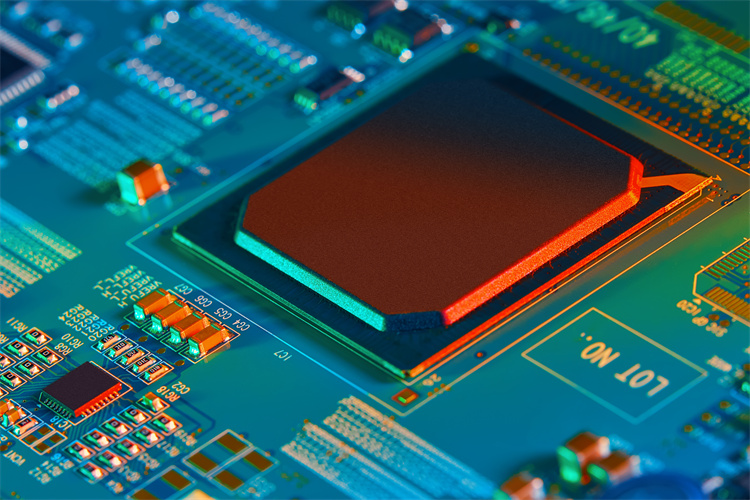Analyzing Semiconductor Market Trends and Their Global Impact

The semiconductor industry stands as a cornerstone of modern technology, driving advancements across various sectors. Semiconductors power everything from smartphones to advanced medical equipment. The significance of semiconductor market trends cannot be overstated, with projections indicating a robust growth trajectory. The global market is expected to reach approximately USD 1,137.57 billion by 2033, showcasing a compound annual growth rate of 7.64% from 2024 to 2033. These trends have profound implications, influencing technological innovation and economic landscapes worldwide.
Semiconductor Market Trends and Their Evolution

Technological Advancements in Semiconductor Market Trends
Innovations in Chip Design
The semiconductor industry continuously evolves through innovations in chip design. Engineers focus on creating smaller, more efficient chips. These advancements increase processing power and reduce energy consumption. The demand for high-performance computing drives these innovations. Companies invest heavily in research and development to stay competitive. The push for miniaturization leads to breakthroughs in nanotechnology. This trend enhances the capabilities of consumer electronics and industrial applications.
Impact of AI and Machine Learning
AI and machine learning significantly impact semiconductor market trends. These technologies require powerful processors to handle complex algorithms. Semiconductor companies develop specialized chips to meet these demands. AI accelerates innovation in semiconductor technology. The industry sees a surge in demand for AI-driven applications. Machine learning enhances data analysis and decision-making processes. The symbiotic relationship between AI and semiconductors fosters growth and opportunities.
Market Demands Shaping Semiconductor Market Trends
Consumer Electronics Growth
Consumer electronics drive significant semiconductor market trends. The proliferation of smartphones, tablets, and wearables increases demand for advanced chips. Manufacturers focus on enhancing device performance and battery life. The Internet of Things (IoT) expands the need for connectivity solutions. Semiconductor companies develop chips to support smart home devices and appliances. The consumer market influences production strategies and technological advancements.
Automotive Industry Needs
The automotive industry plays a crucial role in shaping semiconductor market trends. The shift towards electric and autonomous vehicles increases demand for specialized chips. Semiconductors enable advanced driver-assistance systems and infotainment features. The industry requires reliable and efficient components to ensure safety and performance. Automotive manufacturers collaborate with semiconductor companies to develop innovative solutions. The integration of technology in vehicles drives continuous growth in this sector.
Economic Factors Influencing Semiconductor Market Trends
Supply Chain Challenges
Supply chain challenges significantly affect semiconductor market trends. Global disruptions impact the availability of raw materials and components. Companies face delays in production and distribution processes. The industry seeks solutions to enhance supply chain resilience. Advanced technologies like IoT and big data improve logistics management. JUSDA Supply Chain Management offers comprehensive solutions to mitigate these challenges. Efficient resource utilization and real-time collaboration become essential.
Geopolitical Influences
Geopolitical factors play a vital role in shaping semiconductor market trends. Trade tensions and regulatory changes impact global operations. Companies navigate complex international relations to maintain market presence. The industry adapts to shifting policies and economic conditions. Geopolitical influences drive strategic decisions and investment plans. Semiconductor companies prioritize diversification and risk management strategies.
Challenges Facing the Semiconductor Industry
Supply Chain Disruptions and JUSDA's Role
Causes of Disruptions
The semiconductor industry faces significant supply chain disruptions. Global events like natural disasters and pandemics disrupt production schedules. Shortages of raw materials lead to delays in manufacturing processes. Transportation bottlenecks cause further complications in distribution networks. Geopolitical tensions result in trade restrictions and tariffs. These factors collectively contribute to instability in the supply chain.
Strategies for Mitigation
JUSDA implements strategies to mitigate supply chain disruptions. The company focuses on resilience through risk management and strategic collaborations. Advanced AI algorithms enable demand forecasting and inventory optimization. Proactive identification of disruptions allows swift and agile responses. JUSDA leverages IoT, cloud computing, and big data analytics for seamless connectivity. These technologies enhance operational efficiency and reduce lead times. Strategic partnerships stabilize and optimize supply chains amidst crises.

JUSDA Solutions
To provide you with professional solutions and quotations.
Environmental Concerns
Sustainability in Production
Sustainability in production becomes a critical concern for the semiconductor industry. Manufacturing processes consume substantial energy and water resources. Emissions of toxic chemicals and greenhouse gases impact the environment. Companies invest in sustainable practices to minimize ecological footprints. Innovations in energy-efficient technologies reduce environmental impact. Adoption of renewable energy sources supports sustainability goals. Recycling and waste management initiatives further promote eco-friendly operations.
Regulatory Pressures
Regulatory pressures influence the semiconductor industry's environmental strategies. Governments enforce strict regulations on emissions and resource usage. Compliance with environmental standards becomes mandatory for manufacturers. Companies face penalties for failing to meet regulatory requirements. Investment in green technologies aligns with global sustainability objectives. Collaboration with regulatory bodies ensures adherence to environmental guidelines. These efforts contribute to a more sustainable and responsible industry.
Global Impact of Semiconductor Trends

Influence on Global Economies
Economic growth in tech-driven countries
The semiconductor market trends have significantly influenced economic growth in tech-driven countries. Nations like China, India, and the United States have seen substantial investments in semiconductor technology. India collaborates with the US Semiconductor Industry Association to boost cooperation in the global ecosystem. These investments drive technological advancements and economic expansion. The Asia Pacific region dominates due to robust electronics industries and rapid urbanization. Government initiatives further bolster this growth through supportive policies.
Impact on global trade
Semiconductor market trends also impact global trade dynamics. The industry plays a crucial role in international commerce. The demand for semiconductors drives exports and imports across various regions. Countries engage in strategic partnerships to secure supply chains and access cutting-edge technologies. Trade tensions and geopolitical factors influence market operations. Companies navigate these complexities to maintain competitive advantages. This growth underscores the industry's significance as a major economic force.
Technological Advancements Worldwide
Role in digital transformation
Semiconductors play a pivotal role in digital transformation worldwide. The increasing reliance on digital technologies fuels demand for advanced semiconductors. Industries such as healthcare, automotive, and telecommunications benefit from these innovations. Semiconductors enable faster data processing and connectivity solutions. The integration of artificial intelligence and the Internet of Things drives technological progress. Companies invest in research and development to create high-performance chips. These advancements support the digital economy and enhance global competitiveness.
Contribution to emerging technologies
Emerging technologies rely heavily on semiconductor market trends. Innovations in AI, virtual reality, and 5G connectivity require powerful processors. The semiconductor industry meets these demands through specialized chip designs. The rapid advancement of these technologies accelerates market growth. Companies develop solutions to support smart devices and applications. The industry's influence extends to sectors like clean energy and transportation. Semiconductors contribute to sustainable practices and eco-friendly solutions. The global market's growth trajectory highlights its critical role in shaping the future.
The semiconductor industry experiences transformative trends that shape technological progress. Innovations in AI and IoT drive demand for advanced semiconductors. The industry faces challenges like supply chain disruptions and geopolitical tensions. Despite these obstacles, the sector remains poised for growth. Market projections indicate significant expansion opportunities. The global AI hardware market is projected to reach USD 473.53 billion by 2033. The semiconductor industry's future looks promising with continuous advancements. The global impact of these trends underscores the industry's critical role in driving economic and technological development worldwide.
See Also
Revealing How Technology Influences Market Trends
Insider Tips for Semiconductor Industry Quality Assurance
Upcoming Trends for Enhanced Supply Chain Efficiency
